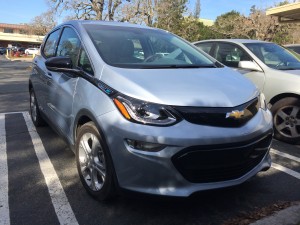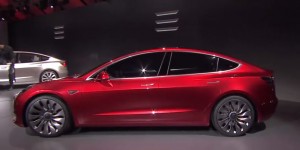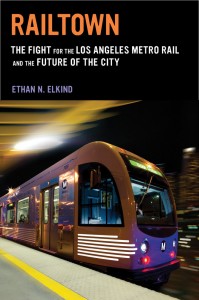The news that Republicans are targeting the $7,500 federal tax credit for electric vehicles has stirred up automakers, who are relying on the incentives to boost demand for their EV investments. The incentive was created in 2008 through a bipartisan deal, with environmentalists teaming with national security-types concerned about U.S. dependence on foreign oil. The credit is available for the first 200,000 qualifying vehicles by each automaker. While no automaker has reached that cap, Tesla should do soon, once the Model 3 is widely available.
But how motivated is the auto industry to fight for it? Tesla certainly has the most incentive, given their all-electric line of vehicles. But so far they are mum publicly. The other automakers are mixed on electric vehicle deployment. General Motors and Nissan have gone all-in on EVs, but they still make their money on big gas cars.
And perhaps more importantly, the industry as a whole would presumably benefit from the huge corporate tax cuts proposed in the plan. They therefore may be unwilling to pick a strong fight over this one provision for just one part of their business, given how much they could benefit from the plan overall.
E&E news reports [paywalled] on the industry position:
“Eliminating the fuel-cell and EV credits will hamper progress towards getting these very clean and energy-efficient vehicles on the road,” said Gloria Bergquist, a spokeswoman for the Alliance of Automobile Manufacturers, the powerful trade group for domestic automakers.
Yet she also said the EV tax credit had not previously been a focus of lobbying as Republicans drafted their proposal. Member companies of both the car alliance and the Association for Global Automakers — the trade group for the U.S. operations of international automakers — are meeting this week to sketch out a position and strategy.
That lack of sustained interest in fighting for the tax credit is troubling. For example, the article reports that Ford Motor Co. redirected inquiries on this subject to the Alliance of Automobile Manufacturers, “a tactic most automakers assume when there’s disagreement within the industry about strategy.”
Until we see more all-electric automakers like Tesla, EV backers may have a tough road ahead relying on the auto industry for full-throated support for supportive policies. In the meantime, the tax plan still has a long way to go to becoming law, with many changes likely to occur. So we’ll have to stay tuned.
California’s 2030 climate goals will be a big step forward for the state. We’re already making good progress achieving our 2020 goals (to return to 1990 levels of carbon emissions), with the state likely to hit that goal a bit early thanks to the global recession and the plummeting price of renewables. But the 2030 goals require an additional 5% reduction per year in emissions for the 2020s, to reduce our levels 40% below 1990 emissions. That’s a tall order.
Electric utilities will be a big part of the solution, but not just because of their efforts to decarbonize the electricity supply. They’re also needed to expand the kinds of things that can run on electricity instead of petroleum or natural gas.
Southern California Edison makes that case and puts numbers behind it, in a recent white paper the utility commissioned, per E&E news:
SCE used an analysis from the consulting firm E3 that found the cheapest of three pathways to meeting the state’s 2030 emissions goals entails electrifying 24 percent of light-duty vehicles and 15 percent of medium-duty vehicles, in addition to reaching an 80 percent carbon-free electricity target. It also would require 30 percent of residential and commercial water and space heaters to run on electricity rather than gas.
This pathway seems achievable at a reasonable cost, given the advances in battery technologies on the vehicle side. Still, we will need to keep the federal tax credit in place or find a viable substitute to keep demand for EVs strong in the short run.
On the furnace and water heating side, we’ll need some new, cheaper products to wean buildings off of natural gas and onto clean electricity. But the good news is that achieving the 80% carbon-free electricity goal by 2030 may not be so daunting, given that we may be on track for 60% renewables by 2030 anyway, plus all the large hydropower that doesn’t count under the renewables mandate.
As always with the future, there are plenty of variables and unknowns. But California’s progress to date on clean tech gives us a clear idea of what’s needed — and what the costs may be — to achieve the 2030 goals.
Halloween may be over, but the climate frights this week continue. Here are the scary highlights:
- Electric vehicle incentives in trouble: the Republican tax plan would eliminate the $7500 tax credit for EV purchases, which would likely torpedo sales for all but the luxury EVs in the short term. States might be able to dig deep to make up some of the difference, and the tax credit is set to phase out anyway for automakers over certain sales amounts, but nonetheless this would be a big blow to demand.
- Infill tax credits at risk: the Republican tax plan also targets federal programs that help revitalize infill neighborhoods. It would eliminate key programs like New Markets Tax Credits (NMTC), Historic Preservation Tax Credits (HTC), and the Community Development Block Grant (CDBG) program. As Smart Growth America and their infill group Locus writes in a newsletter today, “community development projects almost invariably rely on federal programs like these to fill a critical financing gap, often making the difference between a go and a no-go decision for a project penciling out.”
- Tesla Model 3 stuck in production “hell”: Tesla’s third-quarter earnings call brought bad news about the Model 3, the $35,000 mass-market EV that is struggling to meet its production targets. The company’s goal of producing 5,000 units a week by the end of 2017 has slid to the first quarter of 2018. The normally upbeat Elon Musk was apparently in a bad mood, per E&E News [paywalled]:
The call’s tone was a swing to the dark side for Musk, who on quarterly earnings calls often minimizes problems and instead trumpets the company’s successes, or announces or at least hints at some bold new initiative.
- Earth passes a carbon milestone: scientists report that the rate of carbon dioxide being released into the atmosphere accelerated at an unprecedented pace last year, reaching levels not seen in 800,000 years. Per E&E news [paywalled]:
Current levels of CO2 correspond to the Pliocene period from 3 million to 5 million years ago, when the climate was 3.5 to 5.5 degrees Fahrenheit warmer, the report found. At that time, the ice sheets of Greenland and West Antarctica were melted. Sea levels were 30-60 feet higher than they are now.
I’d say this is not a good time to invest in ocean-front property. Happy Frightful Friday!
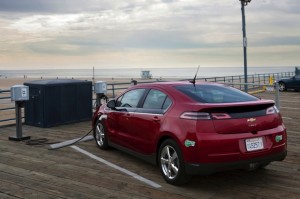 If you care about global adoption of electric vehicles, there is good news out of China. The country is requiring one out of every five vehicles sold by 2025 to be electric. And Chinese residents have bought 300,000 electric vehicles already this year — equal to all the EVs sold in California to date, from 2011 to the present.
If you care about global adoption of electric vehicles, there is good news out of China. The country is requiring one out of every five vehicles sold by 2025 to be electric. And Chinese residents have bought 300,000 electric vehicles already this year — equal to all the EVs sold in California to date, from 2011 to the present.
But as the New York Times reports, these requirements and market support are in part designed to help China corner the market on producing and manufacturing these vehicles:
Behind the scenes, China is recruiting some of the world’s best electrical engineering talent, even in the United States. China is also home to many smaller companies that make the parts essential to assembling electric cars. All this comes just as electric cars are finally starting to become competitive with gasoline- or diesel-powered cars on performance and cost.
So while the U.S. federal government is trying to roll the clock back on clean technology and pretend we can go back to a fossil fuel world, China is getting ready to eat our lunch on the next generation of vehicles. California in particular has a lot to lose economically, with Silicon Valley emerging as a hub for both electric vehicle innovation and manufacturing, with the Tesla plant just up the road in Fremont.
In the end, it’s good for the environment and the economy if China can make EVs cheap and ubiquitous. But it would be a shame for the U.S. to lose its edge on the jobs and economic growth that goes with that production.
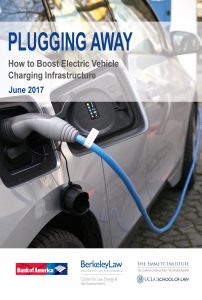 It’s a corporate acquisition that could be the sign of a coming tectonic shift from gas to electricity: the gas station company Royal Dutch Shell just bought NewMotion, one of Europe’s largest electric vehicle charging providers. NewMotion’s specialty is converting parking spots into EV charging stations, with more than 30,000 EV stations in Europe.
It’s a corporate acquisition that could be the sign of a coming tectonic shift from gas to electricity: the gas station company Royal Dutch Shell just bought NewMotion, one of Europe’s largest electric vehicle charging providers. NewMotion’s specialty is converting parking spots into EV charging stations, with more than 30,000 EV stations in Europe.
As CNN reports:
The acquisition, Shell’s first in this space, shows how Big Oil is being forced to confront the long-term threat posed by electric cars and efforts to phase out gasoline and diesel vehicles.
“This is a way of broadening our offer as we move through the energy transition,” Matthew Tipper, Shell’s vice president of new fuels, told CNNMoney in an interview. “It’s certainly a form of diversification.”
We’ve certainly seen oil companies try to diversify before. Chevron, for example, had a renewable fuels unit that it discontinued a few years ago, as oil prices and profits went up at the time. But this acquisition could be an indicator that these gas companies now see a growing market for EVs that will need to be met with more fueling infrastructure.
I’ve written before about our sore lack of charging stations in places like California. It would be a pretty elegant solution if more gas station companies like Shell started getting into the EV charging business. Station owners don’t make much on fuel sales anyway but on the retail sales in the on-site mini-marts. So attracting EV buyers to charge and buy at these gas stations could make economic sense. And with super-fast chargers on the way, EVs could be an economic lifeline for these gas stations with fueling as fast as gassing up is now.
The transition to low-carbon fuels will disrupt some existing companies but provide opportunities, too, particularly for incumbents like Shell that are willing to take a risk.
Recently I discussed the sad state of electric vehicle charging infrastructure, given the current and projected demand for charging stations in workplaces, multifamily buildings, and fast-charge “plazas.” I spoke about the need on KALW’s Your Call radio on Monday as well.
 But could hope be around the corner? I was encouraged to see that General Motors, as part of their announcement this week committing to new EV models, will also be building more charging stations.
But could hope be around the corner? I was encouraged to see that General Motors, as part of their announcement this week committing to new EV models, will also be building more charging stations.
It can’t come soon enough. While the Chevy Bolt EV has a useful range of 238 miles per charge (at an affordable price of near $30,000 with incentives), the infrastructure doesn’t exist to support most long-range trips. For example, Bolt EV drivers between Los Angeles and San Francisco, two major markets in the heart of the biggest EV market of California, can’t fast-charge on the major interstate connecting them. GM should do everything it can to fill that gap and others like it.
Meanwhile, electric utilities are gearing up to invest $1 billion in infrastructure, once they finalize the regulatory proceeding in California. And the Volkswagen diesel emissions cheating scandal settlement will steer $800 million for charging stations toward the state in the next 10 years.
All together, reason for optimism that will make progress overcoming the charging station shortage. It can’t come soon enough.
 As countries around the world, and now California, contemplate banning gasoline-powered cars by sometime mid-century, how can electric vehicles fill the need? How “green” are electric vehicles? And how are we going to get the charging stations we need to meet future demand?
As countries around the world, and now California, contemplate banning gasoline-powered cars by sometime mid-century, how can electric vehicles fill the need? How “green” are electric vehicles? And how are we going to get the charging stations we need to meet future demand?
I’ll be discussing these issues this morning on KALW radio’s “Your Call” at 10am. I’ll be joined on the panel by Dr. David Reichmuth, senior engineer for Clean Vehicles Program at Union of Concerned Scientists. Tune in and call with your questions!
As the price of electric vehicles (EV) has dropped by nearly half the last few years, the number of Californians driving them has gone way up. Almost 300,000 EVs now ply our roadways, up from around 10,000 just five years ago. Every major automaker has now either introduced one or plans to do so soon.
This is good news for California’s energy and environmental goals, as EVs reduce local air pollution and greenhouse gas emissions, while the batteries can soak up surplus solar or wind energy.
But this progress is threatened by a lack of available charging stations. If you’re among the forty percent of Californians who live in an apartment, townhouse, or condominium without access to dedicated parking with charging capability (even a wall outlet), you may be unable to consider buying or leasing an EV. Notably, an even higher percentage live in these types of dwellings in the state’s urban areas.
These residents need chargers in their buildings to make EV ownership feasible. Failing that, they need dedicated EV chargers at their workplaces for daytime charging, along with convenient and reliable public fast chargers (which can boost the battery to 90 miles of additional range in 30 minutes) at convenient locations, such as at neighborhood grocery stores or commercial centers.
But the state is lagging in deploying the needed infrastructure. Researchers estimate that California may need up to 220,000 publicly accessible charging ports by 2020 to meet projected demand, well beyond the roughly 12,000 available today. Hundreds of thousands of additional charging stations will be necessary at multi-unit dwellings.
This immense infrastructure deployment is unlikely to occur without policy action, which is the subject of our recent report “Plugging Away: How To Boost Electric Vehicle Charging Infrastructure” from the Center for Law, Energy & the Environment at Berkeley Law and UCLA Law. While private sector investment will address some of the need, many charging stations are simply too expensive to build and operate right now, without dependable near-term revenue to cover costs and produce a profit.
The costs are myriad, from the charger to on-site electrical installation to insurance and maintenance. Some charging station owners also face prohibitively high electricity rates, depending on their location and usage. Meanwhile, revenues to cover these costs are uncertain at best and insufficient at worst, typically coming from customer payments and on-site retail purchases as drivers shop while they wait for their vehicles to charge.
Policy makers can take steps to lower costs, primarily through incentives and permit streamlining. Examples include targeted rebates and grants for office and multi-unit dwelling building owners to install charging stations, as well as expedited permitting to allow more curbside charging. Regulators can also reduce fees for adding energy storage to charging sites to decrease electricity costs and simplify the process of connection to the grid.
These measures will help. But they will not be enough by themselves. We’ll need more robust and strategic electric utility investments in charging infrastructure, at least for any new wiring to the charging station. These investments should happen in key locations to stimulate maximum EV convenience and adoption. In addition, utilities and regulators should revise electricity rates to encourage charging at the right places and times to best meet grid needs, simultaneously saving ratepayers money and helping make the grid cleaner and more efficient.
Smart policies and innovation from automakers and battery suppliers has helped make large-scale adoption of electric vehicles in California feasible. But only with continued policy action will we see the corresponding innovation needed on the charging infrastructure side.
If we don’t get that deployment right, too many Californians will miss their chance at an electric ride.
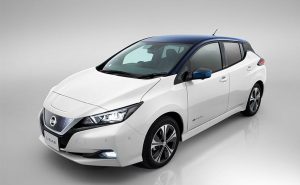 Last week, Nissan became the third major automaker to unveil its second generation electric vehicle, after Tesla’s Model 3 and Chevy’s Bolt. The new all-electric LEAF is certainly an improvement over the original, which was groundbreaking in its day for being the first mass-market, affordable short-range electric vehicle. But it’s ultimately underwhelming.
Last week, Nissan became the third major automaker to unveil its second generation electric vehicle, after Tesla’s Model 3 and Chevy’s Bolt. The new all-electric LEAF is certainly an improvement over the original, which was groundbreaking in its day for being the first mass-market, affordable short-range electric vehicle. But it’s ultimately underwhelming.
Here is the good news:
- The design is much better. The old LEAF looked like a bug (and not in a good way like Volkswagen). This version is much sleeker and more appealing to the eye, bringing some needed style (photo above).
- The battery range is much improved. The old range was 85 miles, which went to 105 miles in the last version. This second generation vehicle can now go up to 150 miles, with plans for a 200-range model perhaps next year or 2019.
- The driving features are better. In particular, Nissan is catching up to Chevy with the “one-pedal drive,” where the car starts braking immediately upon release of the accelerator. It also has some “lane assist” and automatic braking features, also like the Bolt but well behind Tesla’s self-driving features.
- It’s super cheap, compared to other EVs. Despite the increased range, the price has actually fallen a bit, to below $30,000 (before incentives). That means that even though it has 80 miles less range than the Bolt, it’s also starting at $7000 cheaper. I gather that’s the big hope at Nissan, that the car will sell well because it’s cheaper.
But the bad news:
The range is pretty underwhelming, given what the Bolt just pulled off (238 mile average range per charge). How much money is that extra 45 miles over the last LEAF worth to the potential consumer, when they can get a cheaper, older LEAF with about 85 or 90 miles of range for about one-third of the cost of this car?
So ultimately, besides cost savings, what is this car offering a potential EV consumer? It’s hard to see, given the sporty Tesla Model 3 soon to hit the market, and the quality, affordable, long-range Bolt already available.
I certainly wish Nissan well and hope the car sells. But it feels like the company has some major catch-up to do to stay relevant in the EV world.

